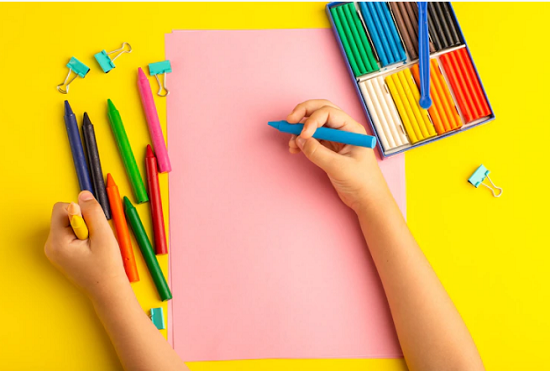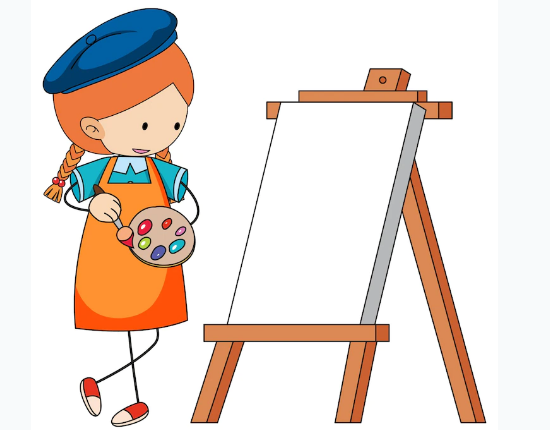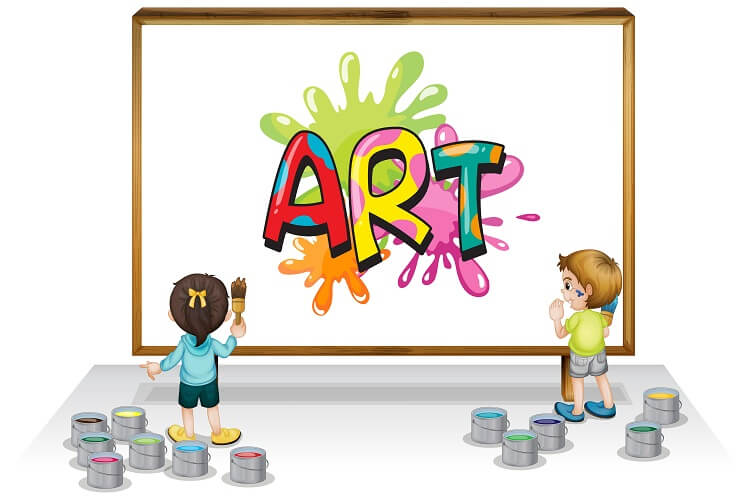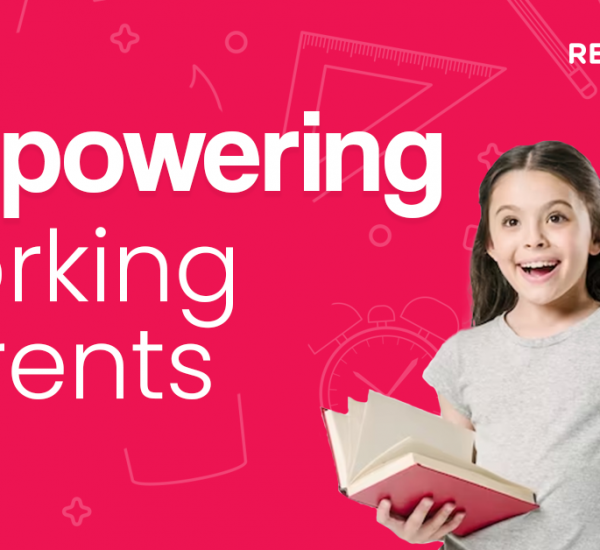When you see your child’s notebook scrawled with little random and incomprehensible drawings, you may believe, like most parents, that your child is squandering time by doodling odd objects that make no sense. You might remind him that a significant drawing or a drawing that makes some sense is acceptable and demonstrates his creative inclination.
You will, however, be incorrect in assuming and asking your youngster to do so since such natural drawings or scribbles are more important than anybody may believe. Several scientific studies suggest that doodling is an excellent activity for improving creativity, building the brain and memory, and helping youngsters relax and stay active. In this article, you will learn how to doodle and some easy doodles for kids.
Learning courses for your kids! Get free trial here
What is Doodling for Kids?
Doodling is just making random and impromptu patterns on paper. There is no standard pattern, form, or material for doodling. Anything may be made; whether it has any shape or not is unimportant.
Doodles are typically made on paper by children using a pencil, pen, or crayon. Doodles are said to represent a person’s spontaneous ideas and serve as a means for them to express themselves. This art genre doesn’t involve much drawing abilities, and one may express ideas with any form, pattern, or shape.

Though when a youngster puts his thoughts and effort into it, he may make great doodling work that can be viewed like any other work.
Why Kids Need to Doodle? Benefits of Doodle Art
Doodling has been shown to be useful to both children and adults in a variety of ways. You must encourage your children to doddle since it has several advantages. Some of the advantages of doodle art for children include:
Also Read: What is Project-Based Learning? Does PBL Really Work for Kids?
#1. Develops Literacy
When young children begin writing, they lack organisation. A basic scribble, whether in drawing or writing, is the beginning point for making a shape. Doodling aids in the development and improvement of fine motor skills. As a result, it is the initial step toward writing and drawing.
#2. Develops Hand-Eye Coordination
As your child continues to doodle, his ability to draw increases, which leads to the development and improvement of his hand-eye coordination. As he begins to sketch or create ordinary items, your child will begin to understand the concepts of space and distance.
#3. Develops Fine Motor Skills
Your baby needs to build fine motor skills, and while he grips a pencil or pen to draw, he acquires the capacity to control the pencil or pen as per his thoughts. When youngsters see their drawings, they can grasp what they have envisioned and what they have made. As they grow older, they learn to create what they see or envision, which helps them develop their motor abilities.
#4. Builds Memory Power
Doodling helps children’s brains stay alert for extended periods of time. It allows individuals to process and remember more information than when they are not doodling.
They will be attending lectures as they grow older, and they must remain awake without getting bored, or their minds will turn off from what is being spoken. Doodling while listening activates their brain without taking their attention away from the lecture or what the speaker is saying. It also allows their power to think and absorb information at the same time.

#5. Improves Focus
Most people believe that while doodling, one is not concentrated and gets distracted by scribbling. Doodling, on the other hand, does not distract but rather helps a person remain focused by absorbing and alerting them. Doodling enhances concentration by keeping the youngster from daydreaming and focusing on what is going on around him.
#6. Relieves Stress
Doodling relieves tension by allowing individuals to relax and unwind by drawing continuous designs or lines repetitively. Because doodling is done without the pressure of producing a nice drawing, it allows the children to feel free and calm.
#7. Boosts Creativity
Doodling stimulates distinct parts of the brain in children. When the child is digesting word-centric information, several of these regions are normally quiescent. When the child doodles, these latent areas spring to life and assist him in arriving at a creative solution or improving his creativity and non-cognitive skills.
Your child may first create incomprehensible doodles; yet, when prompted to describe the drawings, he will provide a detailed account of their genesis. Explaining doodling will assist him in creating a tale and releasing his creativity. This will inspire your youngster to use his imagination and be more creative.
#8. Express Emotions
Doodling is mostly a visual depiction of the collective unconscious and sentiments. As a result, doodling allows the child to freely express his inner sentiments while also relieving tension. Having your youngster express his or her opinions might increase his or her confidence.
#9. Improves Health
When your child draws, he relaxes and his pulse rate rises. Some people associate it with meditation, and just as meditation helps you calm your mind, emotions, and body, so can doodling. It promotes harmony with the inner self and increases consciousness.
Doodling, like meditation, enhances blood pressure, digestion, muscular function, pulse rate, and rhythm. As a result, it benefits your child’s health, wellbeing, mental well-being, and immune system.
Also Read: How to Inspire Children’s Learning? Guaranteed Ways to Help Your Child Perform Well in School
Easy Doodles for Kids
Here are some easy ideas you can start with:
# Mountains
# Moon and stars
# Cake
# Sunset
# House
# Fish
# Door
# Flower
#Space objects

How to Make Fun Doodle Art with Kids?
To encourage children to doodle at first, parents should sketch with them. This will pique the children’s curiosity, and they will gradually like the activity. You will need the following materials to create enjoyable doodle art with your children:
Things You need
# White sheet of paper or drawing book
# Pencil
# Coloured Pen
# Black marker
# Crayons
# Coloured pencils
How to Draw?
The first thing to realise before beginning a doodle drawing is that there is no right or incorrect way to doodle. The proper method is anything and anything. Simply allow your and your child’s imaginations to run wild and draw whatever you want.
However, for newbies’ doodle art for preschool, you can use the following easy procedures as a guideline:
Steps
Take a piece of white paper or a sketchbook. Draw lines with many curves to create large loops or any other shapes you may dream of. The lines should intersect in a variety of places to form various forms.
The doodle art will be more colourful if you use a variety of forms. If your child does not want to draw lines, let him sketch whatever he wants. It should seem natural and unforced. Ask the child to colour the shapes or forms he has made in the colours of his choice. Your youngster can use crayons or colour pencils to fill in the patterns, or he can draw lines or various patterns with the colours.

Because there are no predefined forms or styles of doodling, everything is conceivable. After colouring, use a black marker to highlight the patterns. Your kid’s doodle art is finished.
Conclusion
Doodling is not only a fun way for youngsters to unwind and be creative; it is also a good way for them to increase their brain power. It aids in the improvement of memory, concentration, creative thinking, accelerated learning, and relaxation in children. Doodling is a fun method for your children to study art, express their creativity, and improve both their cognitive and non-cognitive skills.
Visit The Real School Of Montessori, to find exciting activities for kids.
Also Read: Why are Physical Activities Important for Children? What Is Its Role in Healthy Development?







